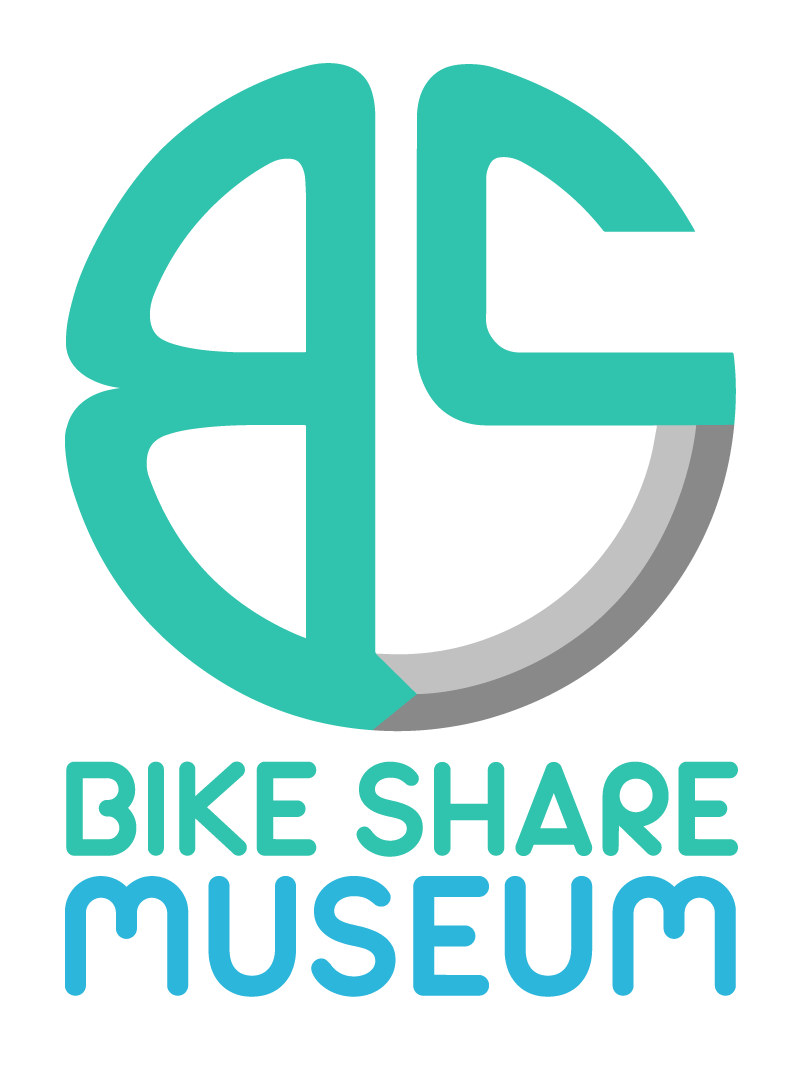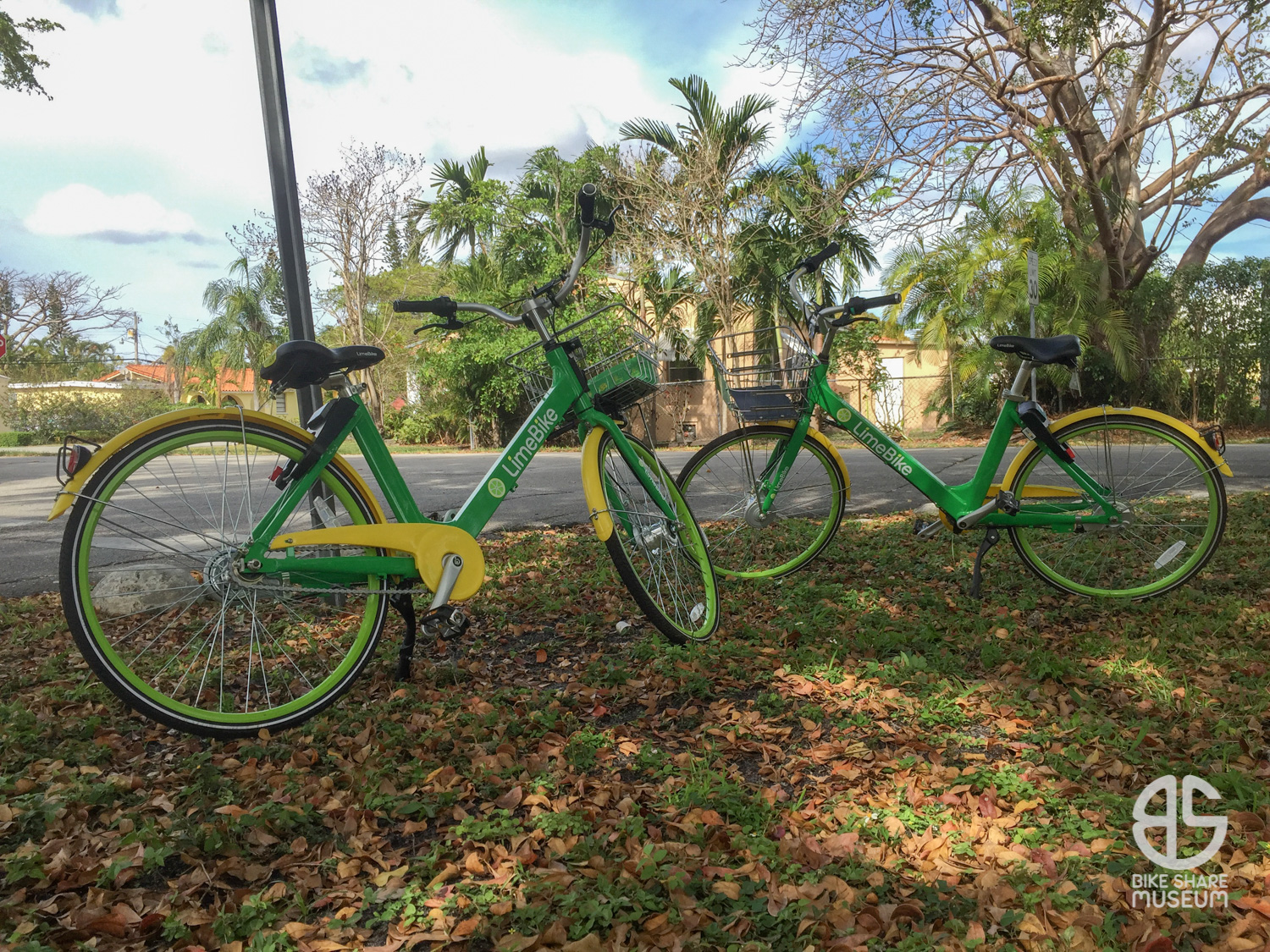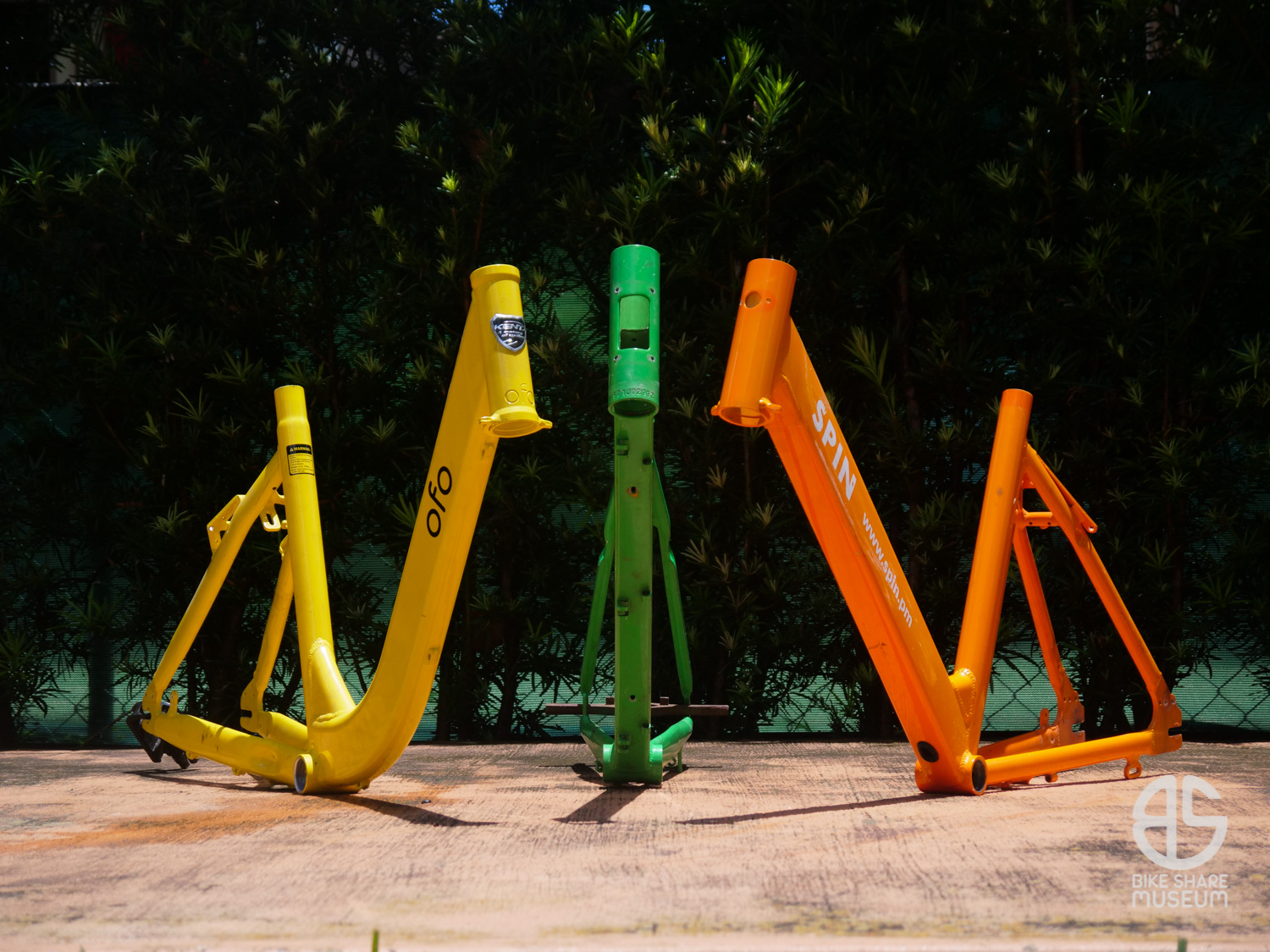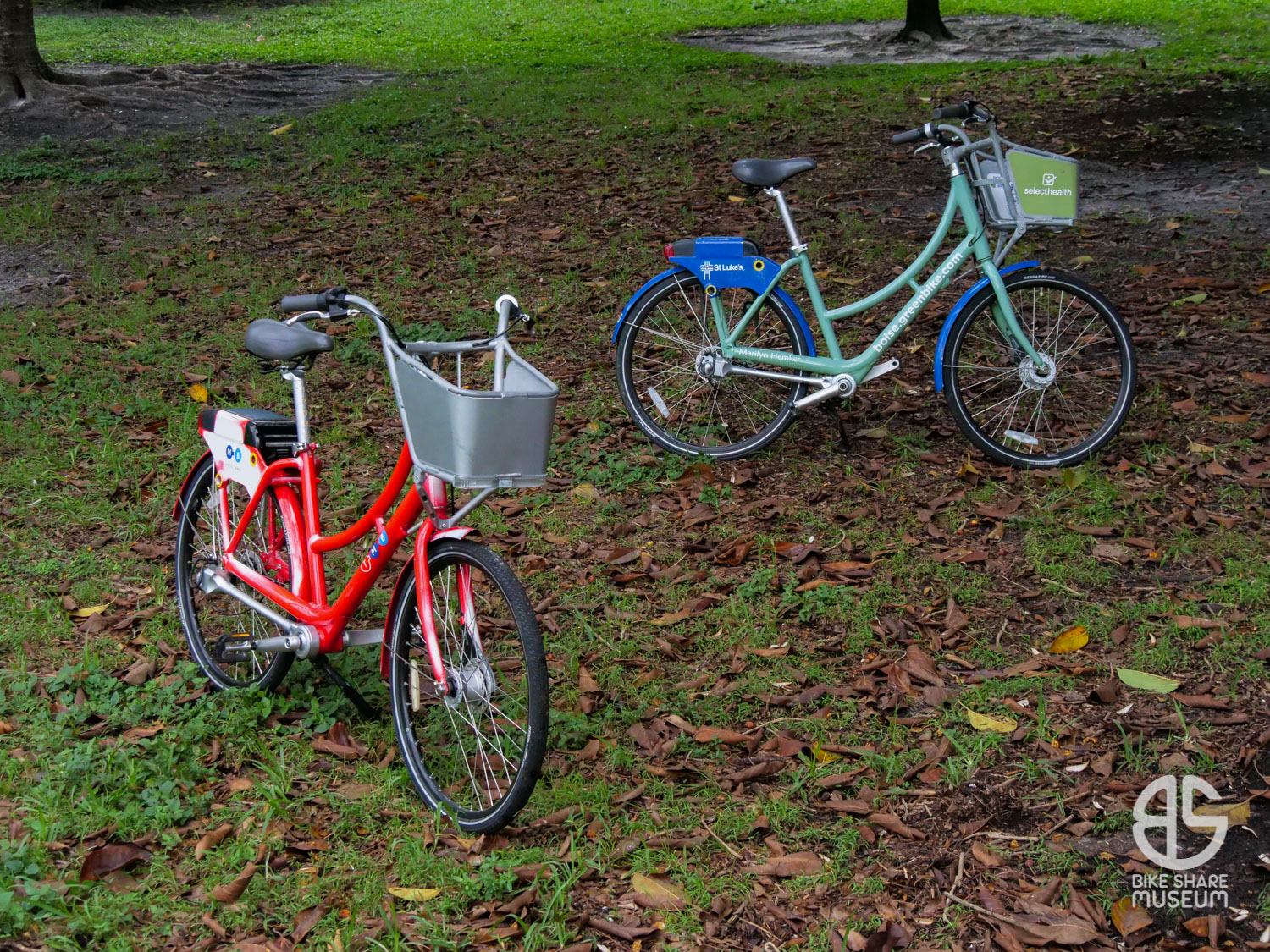Chillin’ Limes & Better Times
One of my favorite bike share memories was when I spotted these two LimeBikes in my neighborhood. This was in mid-2018, when dockless companies were dropping into Miami unfettered and unregulated. Despite what NIMBYs would like you to believe, the sky was not falling. Rollouts were orderly and well-distributed, and the rest of the public was having their say too: They were riding.
On any given weekend, you could peer down a residential street in Coral Gables and have a good chance of spotting an LED headlight of a shared bicycle or scooter ambling in your direction. You’d see young couples riding through the neighborhoods, often exploring the area and the architecture that you could never experience from a tour bus. While many generalize “Coral Gables architecture” to refer to George Merrick’s public city structures and developments, I learned that many of these couples were taking in the more nuanced architectural beauty of the individual homes, many of which are examples of Spanish Revival or unmodified survivors of the Art Moderne movement.
In short, the bold rollouts had encouraged the public to get outdoors and explore places, without dragging their four-wheeled living rooms along. It was entirely possible to empower yourself with micro transit, virtually on a whim. At worst, you’d need to walk a few blocks to get it.
This was a fantastic time to experience. For once, it felt as if there was a glimmer of hope that the brash approach of the dockless revolution could defibrillate the 30-year cardiac arrest of bicycle infrastructure that Miami is so well known for, and force local governments to fast-track micromobility facilities to suit public demand.
But like most great strides of urbanism in Miami, government stepped in to ruin it all with cease-and-desist notices, an apprehensive approach to anything new, and the usual tangles of bureaucratic red tape.
In a matter of months, it was all over. The streets were back to being the same automobile sewers that we’ve known forever, underappreciated and underutilized in their role to bring human beings outdoors to socialize. Historical note: 19th-century bicycle riders – not motorists – were the advocates who fought for paved roads.
A few months later, Coral Gables became the first city in Florida to officially pilot Spin dockless bicycles and scooters, but the damage was done. You couldn’t just walk a few blocks and find something within the proverbial “arm’s reach of desire” – the outlandishly successful business mantra of Coca-Cola’s Robert Woodruff. Most of the bicycles and scooters had been relocated to areas around the Gables business district or near community centers. While this high-visibility strategy may have worked to put the offerings in the public’s eye, it ruined their neighborhood accessibility.
Though Spin and Bird’s scooters have remained popular along the Ponce DeLeon corridor, the ease and incentive to ride a shared bicycle just wasn’t there anymore.
But I digress.
Let’s teleport back to that happy time for a brief moment. About a month into Miami’s micromobility boom, these two Limes popped up in my neighborhood, within walking distance.
This was an unprecedented sight. Until this moment, I could only be insanely envious about all the dream-worthy bicycle and mobility improvements I’d read about on CityLab, TreeHugger, and Streetsblog. But it was at this minute that I knew I had just walked into that dream, and it was draped in bright green, yellow, and QR codes.
These were a pair of the newer LimeBikes (newer as in the two distinct models deployed in Miami, I’m not actually sure of the model codes), both unique in their own way.
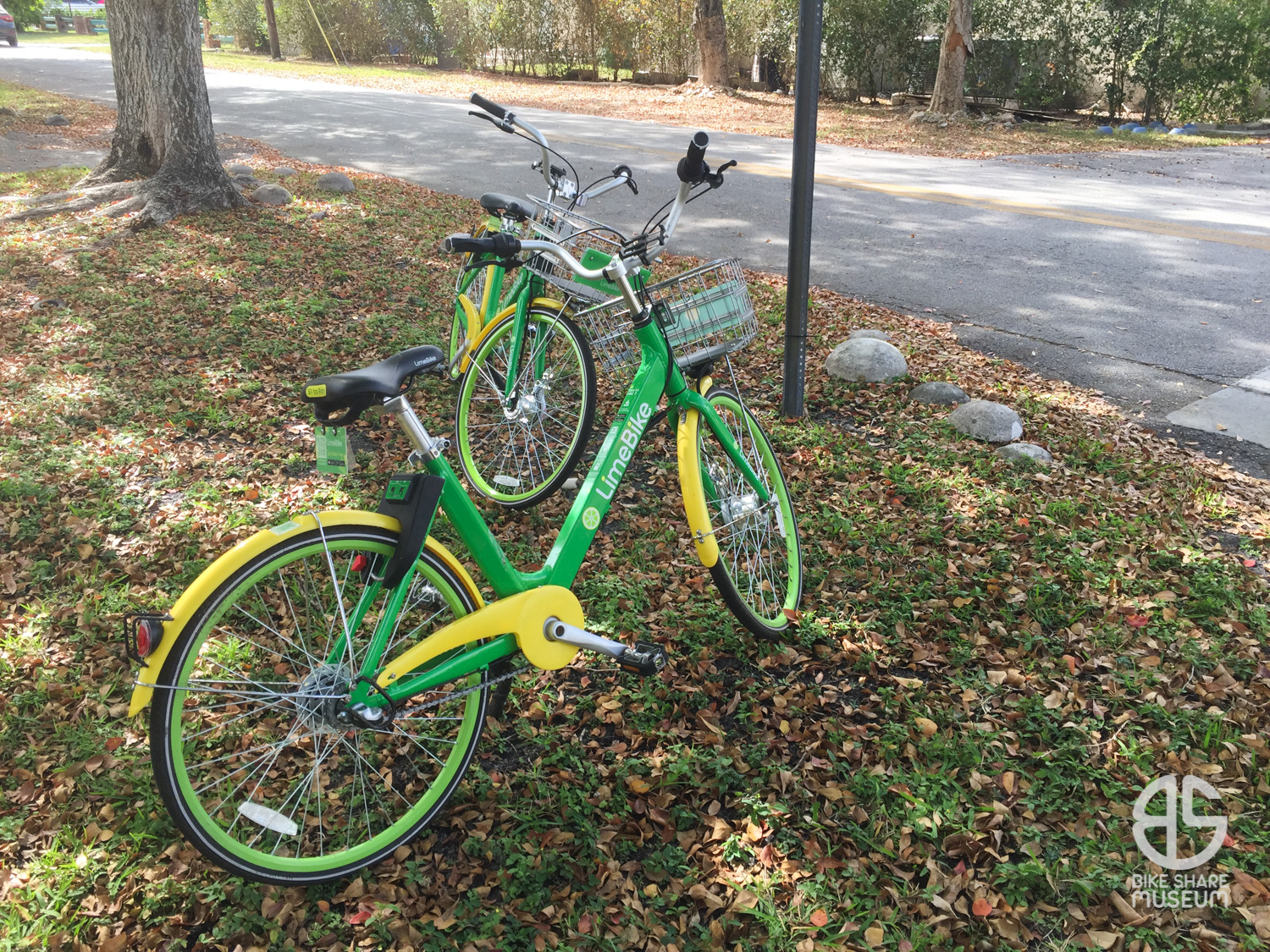
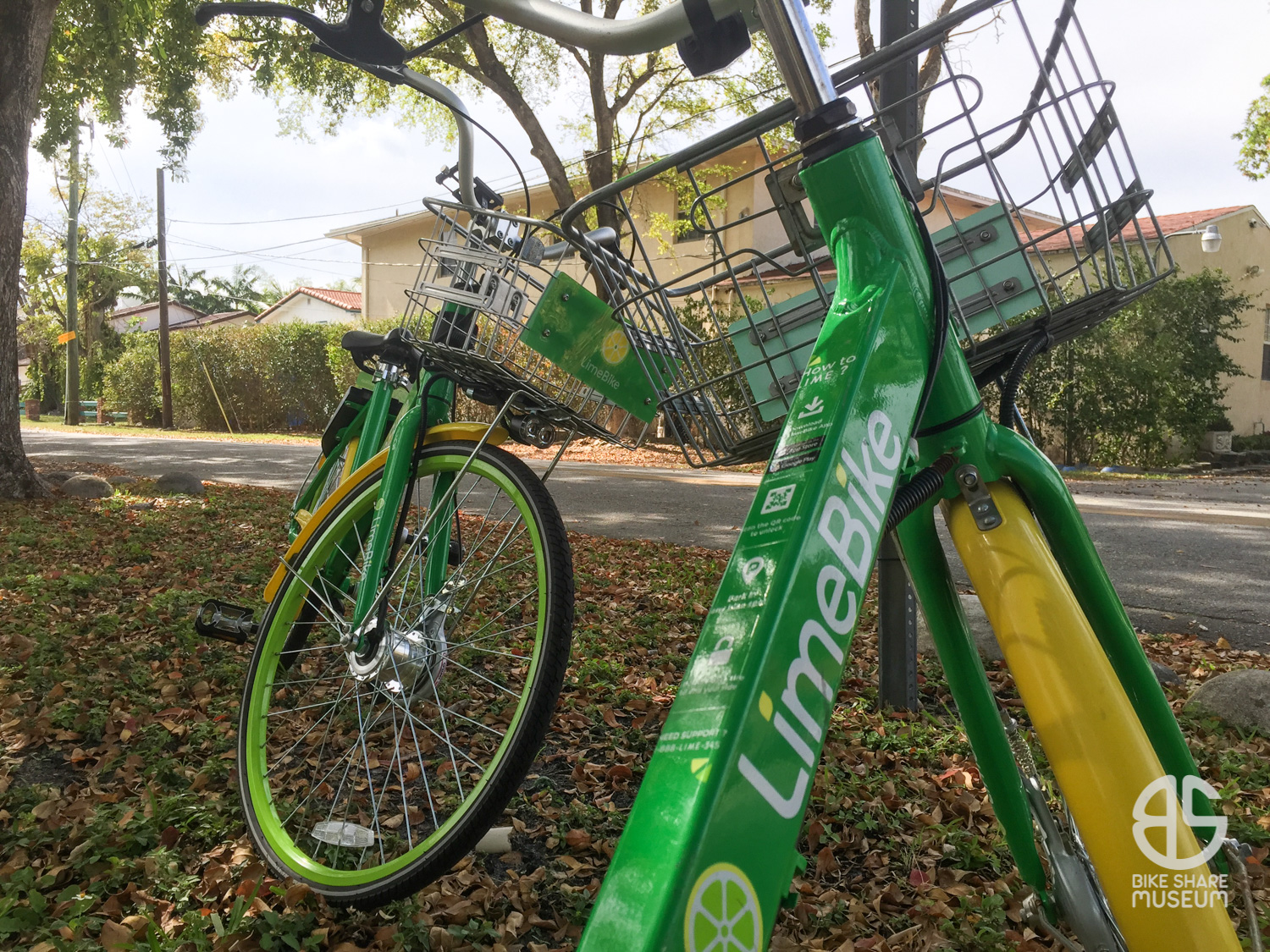
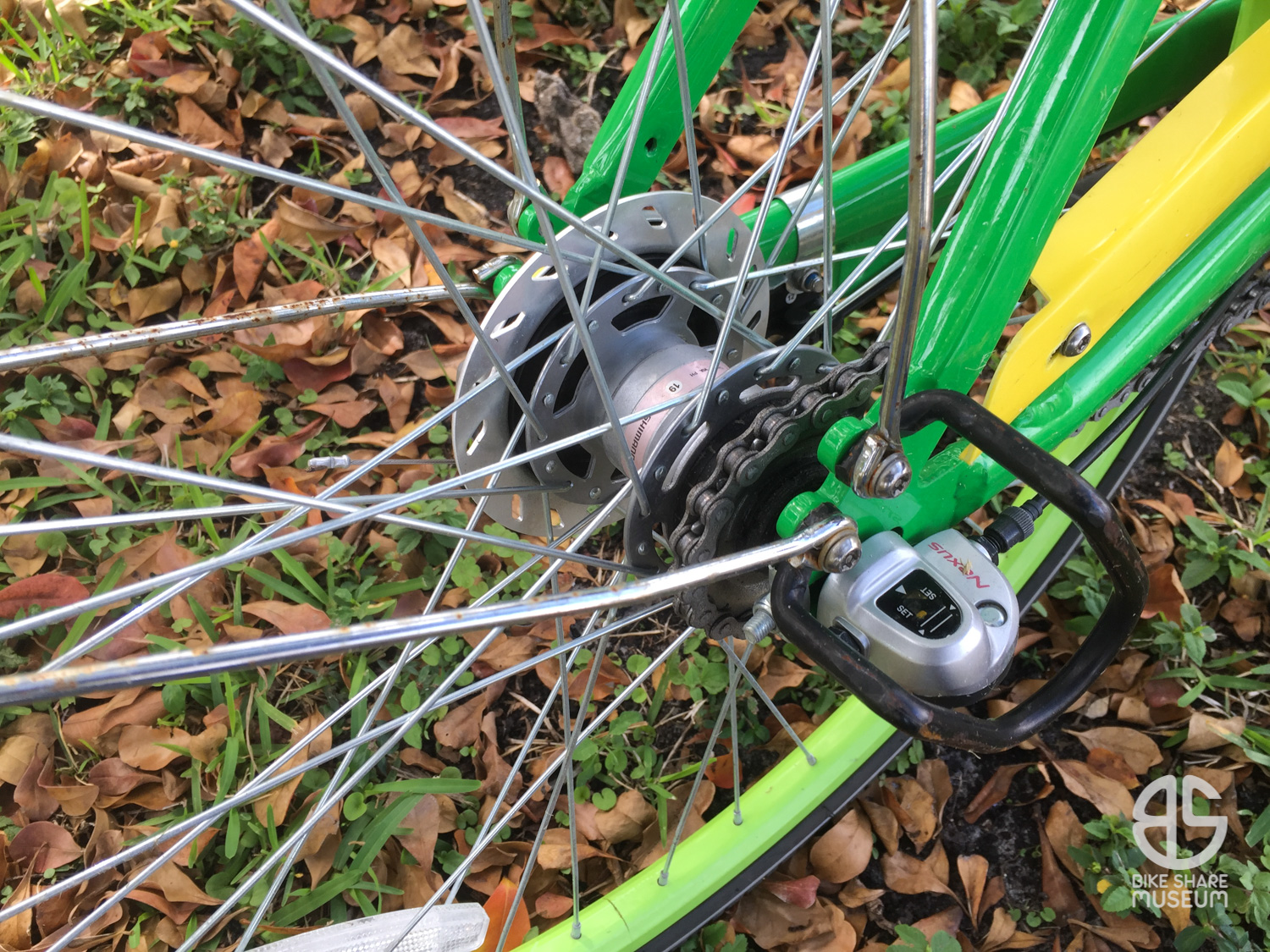
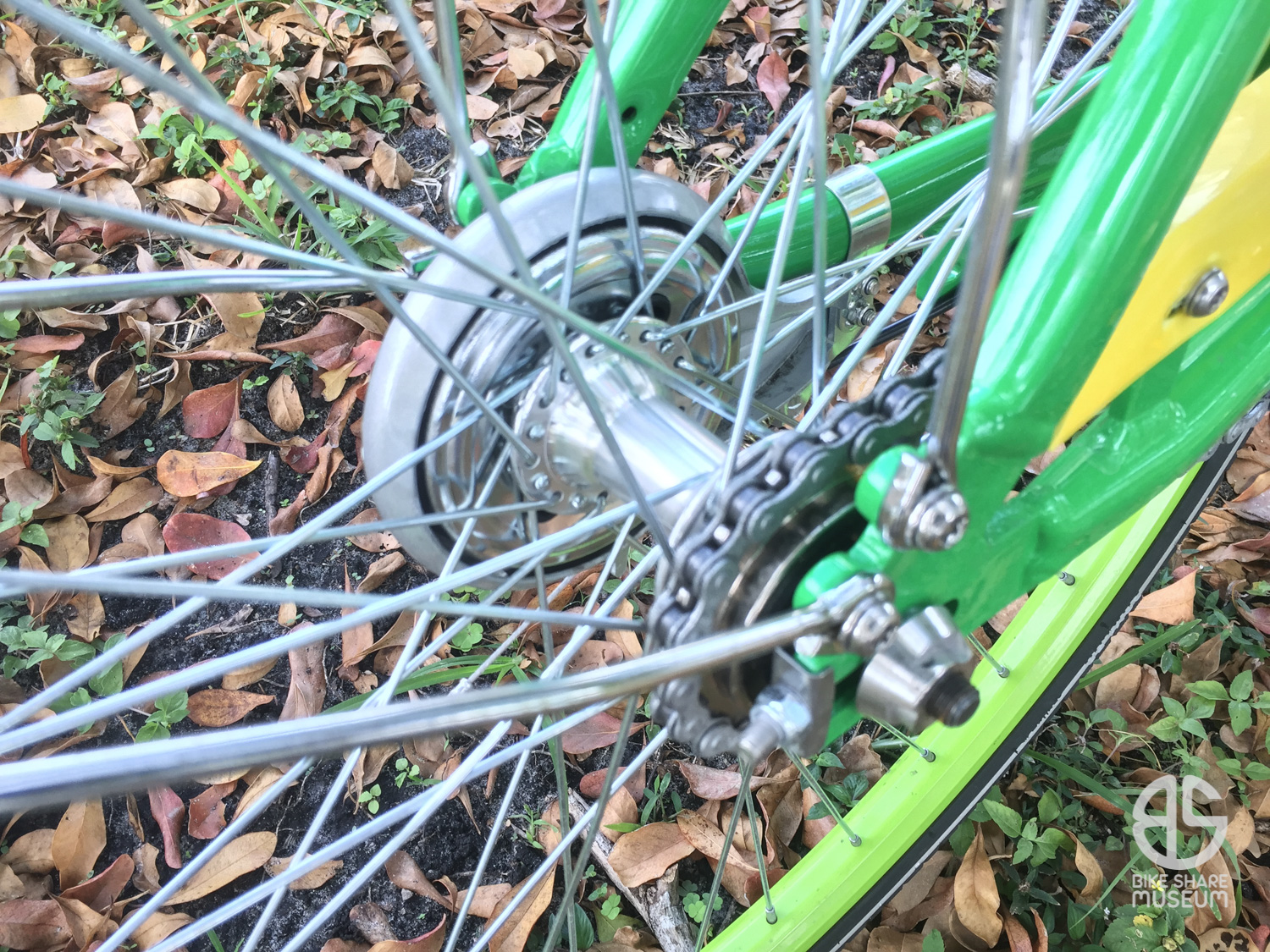
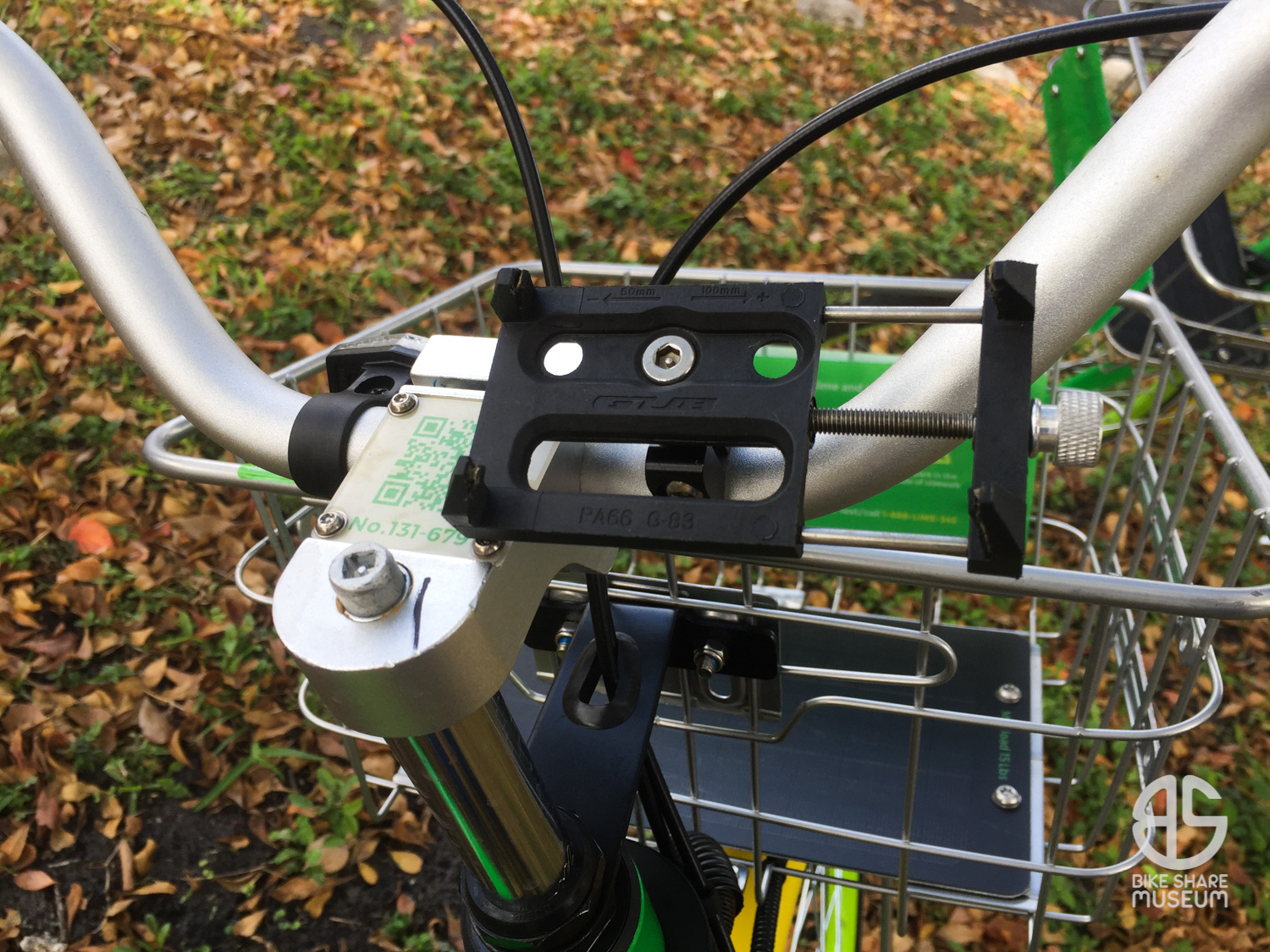
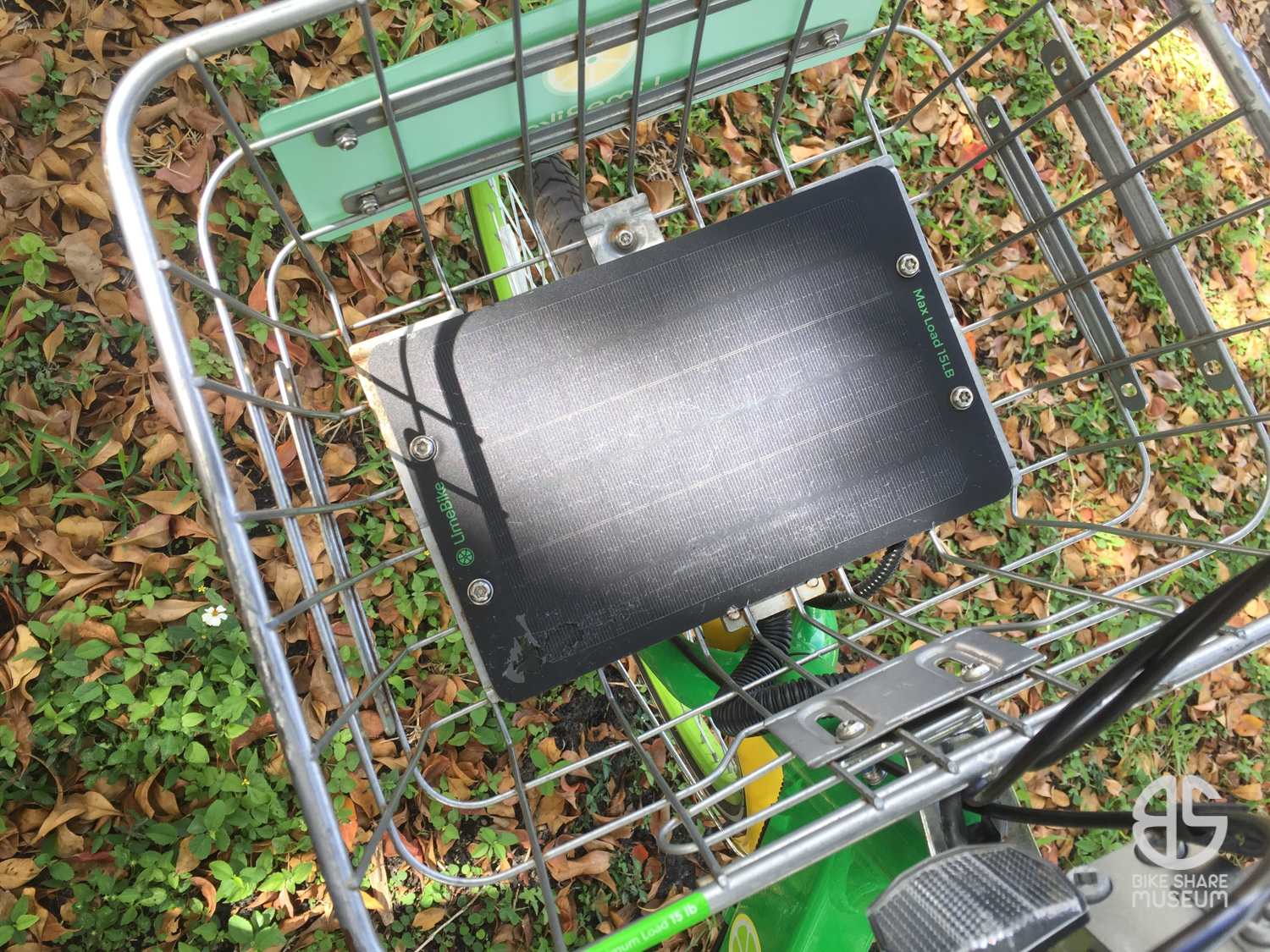
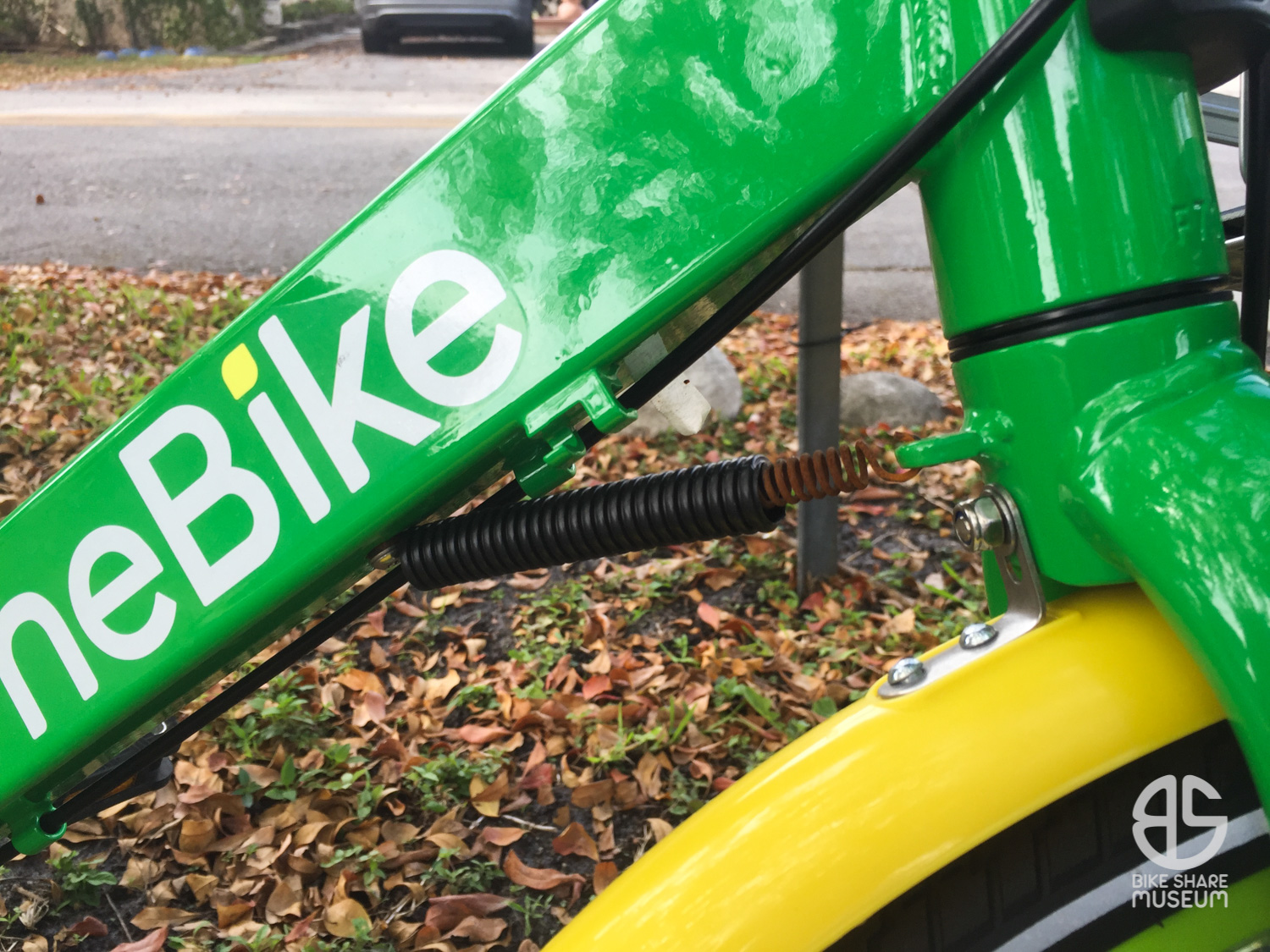
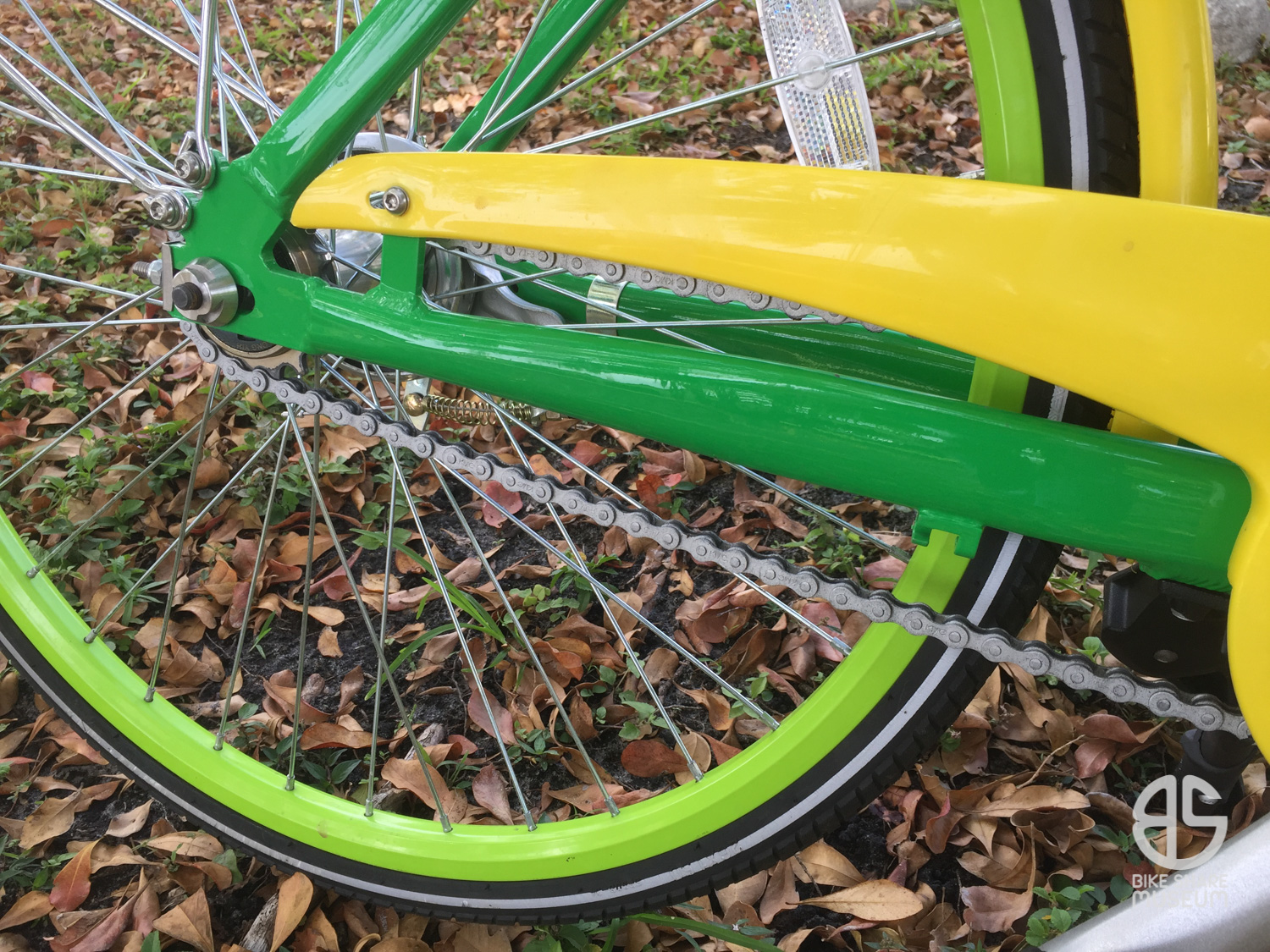
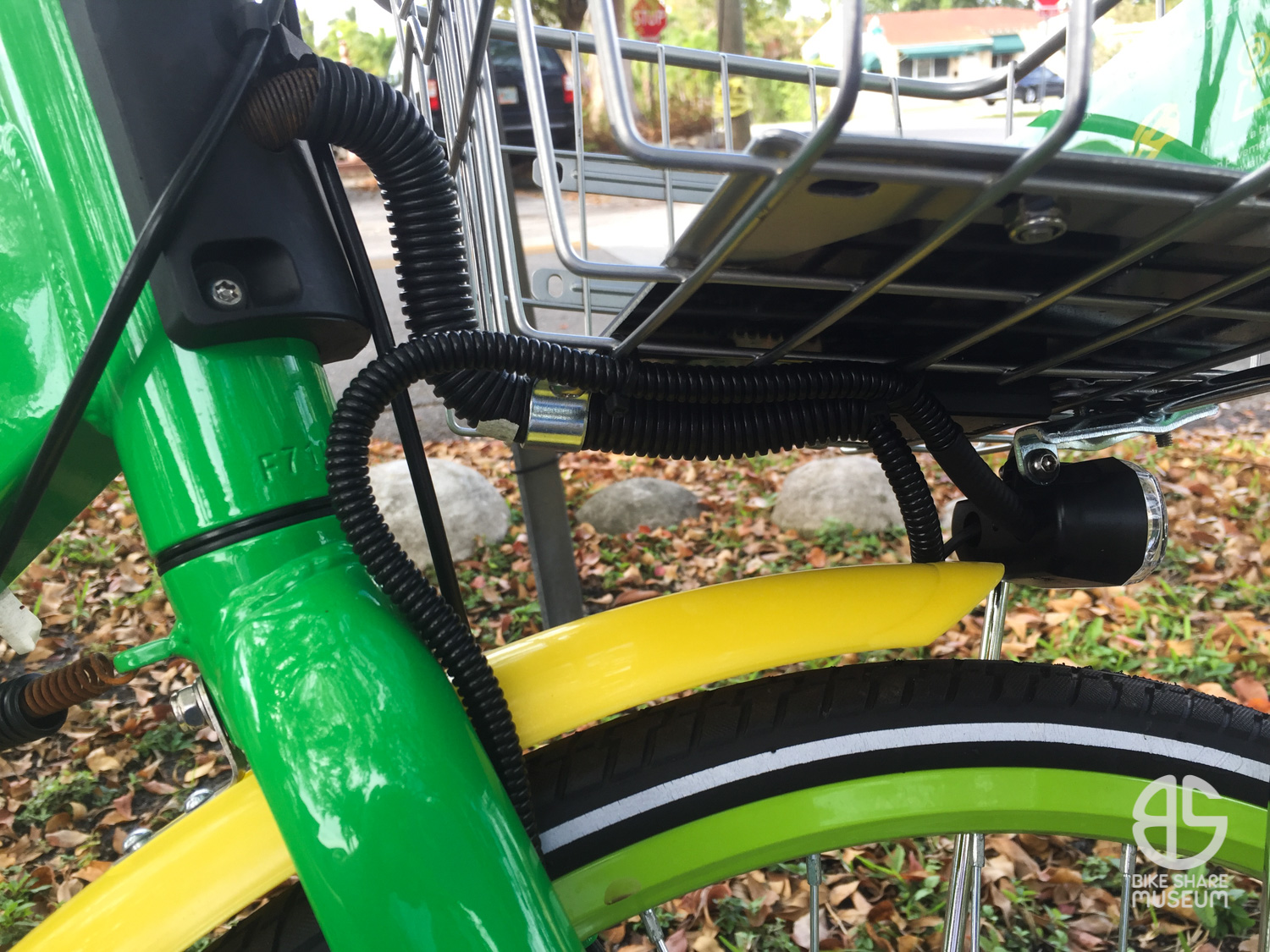
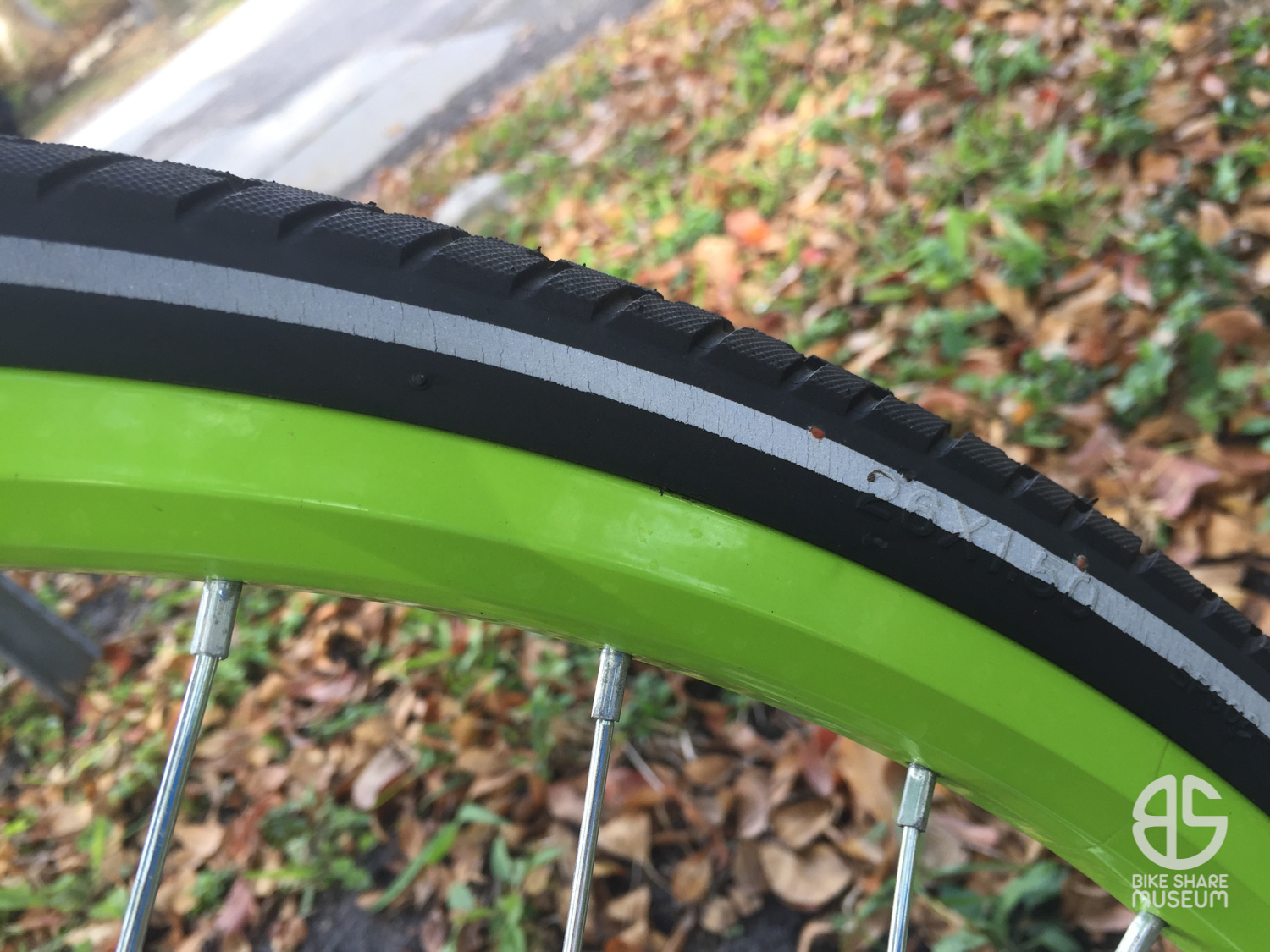
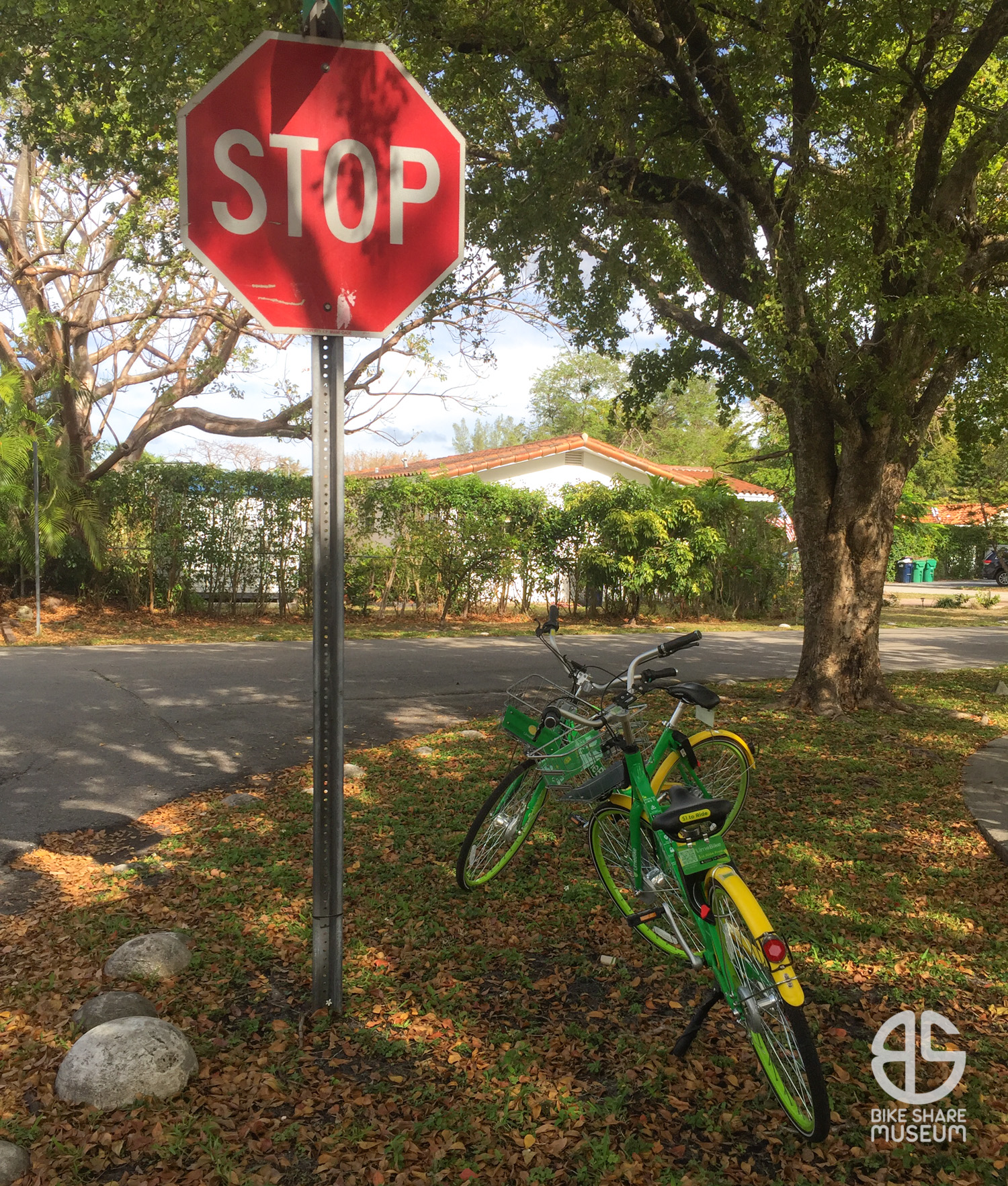
Though based around the same model, I was surprised to find one equipped with a Nexus 3-speed, and the other with a singlespeed freewheel. Most Limes deployed here were the spartan singlespeed models, so the 3-speed was a surprise.
Like many other dockless bikes, both of the Limes run a 6V Panasonic generator up front, band brakes, and their saddle design appears to be shared with the Kent manufactured ofos and Mobike V1/Classic 2.0. Speaking of which, am I the only one who thinks these saddles have the cross-section of a well broken-in Brooks B.72/66/67? I’m not sure they feel quite the same, but I need to adjust the nose of the saddle one tick up on the Museum’s ofo before I can make a better assessment.
The LimeBike frames are among very few bicycle designs to feature a completely squared off (rectangular, to be exact) main tube and still manage to be very aesthetically pleasing, if a bit industrial. Yet, their brawny look is well masked by the upbeat green and yellow color scheme, which is easily my favorite, distinctive feature of the Limes.
To me, the Lime livery is singularly nostalgic of childhood of the late ’80s/early ’90s. This was a time when everything for kids, especially play centers, were awash in bright, solid primary colors. Pastels were for the adults, and even that was starting to change – for instance, the 1994 Family Feud revival set was dressed entirely – and I mean entirely – in primary colors.
Green isn’t a primary color, but it does the job of bringing out the warm fuzzies in me. The front wheel centering spring puts a smile on my face as well, as it’s not uncommon to see these on practical European city bikes. Nothing like a reminder that bike sensibilities of the Netherlands or Denmark are attainable, however small.
These have what appear to be solar panels in the baskets, and I must confess that I’m slightly perplexed by them. I want to say they recharge the lock batteries, but the Museum’s ofo – the one dockless bike I have boundless access to, to-date – has no panel and uses a non-rechargeable Ni-MH 3.6v battery. Presumably, the 3.6v battery of the ofo was expected to last the bike for quite a while before requiring service, while the Limes take long-term service intervals into account.
At any rate, I took these photos to commemorate the occasion, long before I ever conceived the idea of the Bike Share Museum. As such, it has given me the opportunity to check to see if they’re still in service – but, unfortunately, both of these come back as “currently under maintenance.”
Since Miami has since gone full e-scooter – I haven’t seen a dockless bike in service in months – I can only hope that they’re stored for when the region gets with the times and dockless bike share becomes normal again.
After all, you never can tell in Miami.
